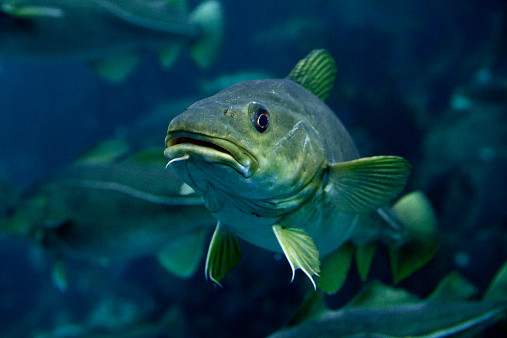Are we in a 'sixth mass extinction'? If so large marine animals could be first to go
Extensive and unsustainable fishing is putting larger animals more at risk.
Larger marine animals are more at threat of extinction than smaller ones, scientists have said. Fossil records show this trend is new to today's world and did not exist in the past, reinforcing the idea that the planet might be entering its period of "sixth mass extinction".
Although the study's first aim wasn't to determine who was to blame for endangering the oceans' giants, the scientists suggest humans are for the most part responsible due to extensive, unsustainable fishing that targets large animals.
On land, the phenomenon of humans killing big mammals has been seen throughout Earth's recent history. Previous research has hinted that ancient humans were probably responsible for the extinction of mammoths and other megafauna across the planet.
This latest study, which will be published in the journal Science on 16 September, suggests that oceans had so far been relatively protected, but a selective extinction of large-bodied animals in oceans was now underway. Like land mammals before them, there is an important demand for these species to feed the world's population.
"We've found that extinction threat in the modern oceans is very strongly associated with larger body size," said author Jonathan Payne, a paleobiologist at Stanford's School of Earth, Energy & Environmental Sciences. "This is most likely due to people targeting larger species for consumption first."
Bigger size, bigger risk
The Stanford-led team of scientists analysed the link between extinction threat level and ecological traits such as body size for two major groups of marine animals – molluscs and vertebrates – over the past 500 years. They also used fossils as old as 445 million years old to compare extinction patterns at different points in history, with a focus on the last 66 million years.

They found evidence that the modern era is unique in the extent to which creatures with larger body sizes are being preferentially targeted for extinction. "What our analysis shows is that for every factor of 10 increase in body mass, the odds of being threatened by extinction go up by a factor of 13 or so," Payne pointed out. "The bigger you are, the more likely you are to be facing extinction."
This is an unprecedented phenomenon on our planet.
Endangering marine ecosystems
There are important risks associated with the extinction of large animals in the oceans. The health of marine ecosystems in their entirety could be threatened, the scientists say. Indeed, they are often at the top of the food chain. They help regulate the size of smaller species so that they don't grow to be too large and unsustainable. Without them, the balance within ecosystems may collapse. Furthermore, their movements through the water column and the seafloor help cycle nutrients through the oceans.
This study does not say whether humans are the only culprits in the extinction of large marine animals but points out that large-scale fishing has not helped. "We see this over and over again," author co-author Noel Heim said. "Humans enter into a new ecosystem, and the largest animals are killed off first. Marine systems have been spared up to now, because until relatively recently, humans were restricted to coastal areas and didn't have the technology to fish in the deep ocean on an industrial scale."

There are still steps that humans could take to limit the damage. Better policies to tackle how ocean resources like fisheries are managed should be implemented rapidly. "We can't do much to quickly reverse the trends of ocean warming or ocean acidification, which are both real threats that must be addressed. But we can change treaties related to how we hunt and fish. Fish populations also have the potential to recover much more quickly than climate or ocean chemistry," Payne concluded.
© Copyright IBTimes 2025. All rights reserved.






















